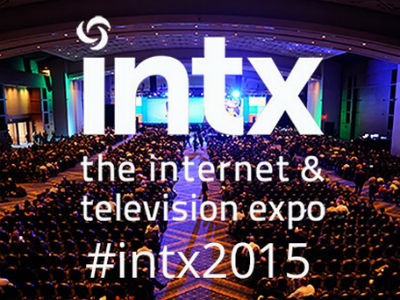INTX 2015: Networks Need to Get ‘Smarter’

CHICAGO -- While everyone seems to be fixated on residential broadband speeds the pump out 1 Gigabit per second or more, cable operators and other broadband ISPs must also continue to focus on improving the overall user experience as consumers connect in and outside the home.
That was a prevailing view here Tuesday afternoon during a technology session focused on innovation and the future of media.
The network is already doing a good job of meeting the needs of most consumers, but “the network has got to be smarter,” said David Dibble, the former Yahoo exec who was named CTO of Cablevision Systems last fall. “It’s not just a series of dumb pipes.”
By “smarter,” Dibble meant using things like telemetry data and other forms of information that can keep tabs on the user experience, and in some cases, make the network itself a self-managed entity.
Tony Werner, the executive vice president and CTO of Comcast, agreed that an important goal is to manage that experience on the wired network to the home and when consumers access the Internet via WiFi. On that point, he said 60% of devices in the home aren’t wired and will only grow.
“I do very much believe that the home will go 100% wireless inside” within 12 to 18 months, he said, noting later that MSOs should strive to make WiFi “bone-dead simple” for the consumer.
However, “you’ll still need a fairly robust [wired] network” underpinning it, Werner added.
Multichannel Newsletter
The smarter way to stay on top of the multichannel video marketplace. Sign up below.
While speed doesn’t tell the full consumer story for broadband, “speed is a good place to start,” Kevin Hart, EVP and CTO of Cox Communications said, noting that the MSO has been expanding the deployment of its new 1-Gig “G!GABLAST” residential service. “Speed is a key metric and something the consumer can relate to.”
But latency for gaming and other real-time apps and service reliability are also key metrics that the industry should also continue to pursue and maybe “put branding around.”
Still, 1-Gig is the new billboard speed that cable operators and other ISPs are chasing, even if the use-case isn’t obviously apparent to most broadband users.
But the consumer demand for 1-Gig will grow as people use broadband to consume video on an increasing number of IP-connected devices at once, leverage cloud-based services and apps, and tap broadband to manage and monitor more elements of their homes and lives.
“At the end of the day, it’s all about the Internet of Everything,” Yvette Kanouff, SVP and general manager of Cisco’s service provider video software and solutions group, said.
Werner agreed that consumer demand for 1-Gig won’t revolve around a solitary, but an accumulation of them, but believes that it will be a long time before that capacity is fully utilized.
“I still think a Gigabit is overkill for some time,” Werner said.
Jeremy Legg, the head of technology and strategy and product monetization at Turner Broadcasting System, noted that beefier broadband can also help programmers develop “smarter content.”
For TV Everywhere apps like CNNGo, Turner is already annotating content as it’s produced live, paving the way for a future in which consumers can essentially “multicast” a feed of CNN tailored for a viewer’s particular interests.
On the point of smarter content, Werner noted that Comcast is developing an “enhanced content” feature for the MSO’s X1 video platform that will enable programmers to add additional content that can be layered on top of the video feed.
“We very much want the content folks to be on our platform,” Werner said.
